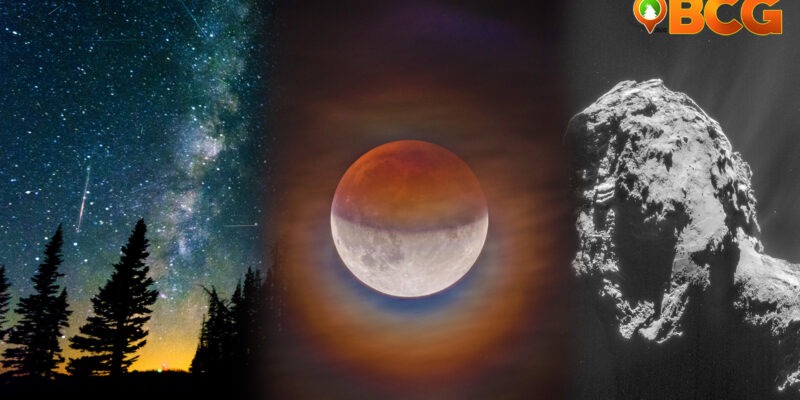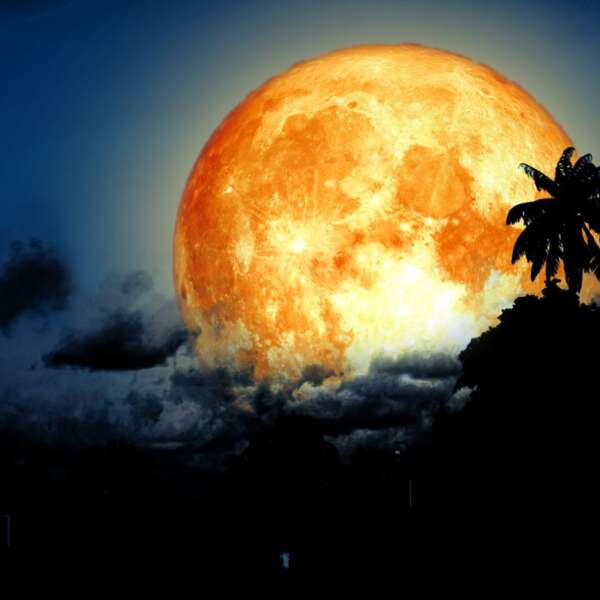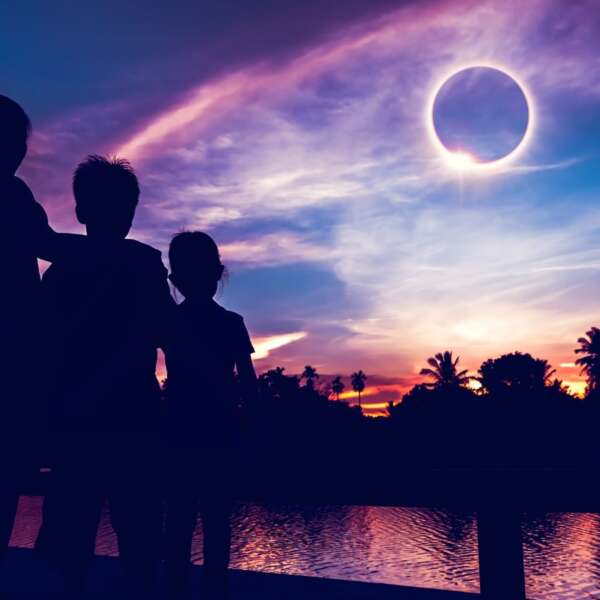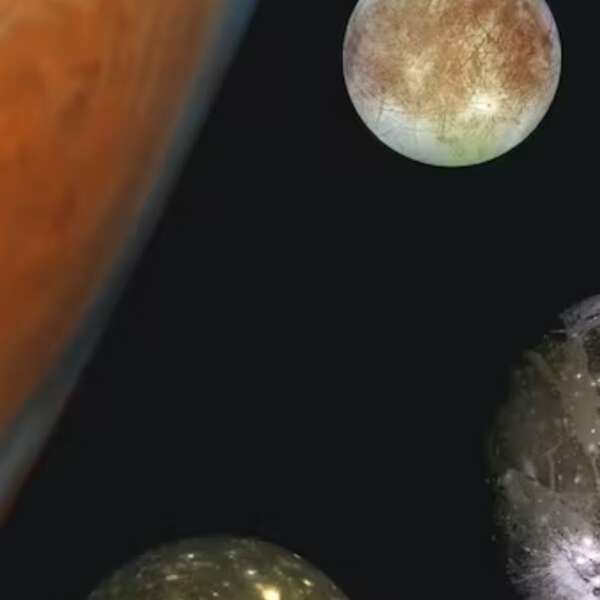What’s Up in the November Sky? 4 Meteor Showers, a Comet, and Partial Lunar Eclipse
This November, it’s easy to feel as though we are in the anime “Kimi No Nawa” with the numerous astronomical events we can look forward to this month. Of course, without the worry that the comet will fall down and hit our planet. According to the Astronomical Diary of PAGASA, four meteor showers will reach their peak and will be observable this month for sky enthusiasts. A Lunar partial eclipse and the observance of a comet is also in tow for November.
Meteor Showers
Northern Taurids
The Northern Taurids are also called the “Halloween fireballs” and are usually seen from mid-October until mid-November. Every year, Earth passes through some debris left by Comet Encke. Taurid Meteors can be seen every time the Taurus constellation is above the horizon from October to November. According to NASA, the best time to look for the Taurids is just after midnight.
Leonids
Another annual meteor shower is the Leonids, which is caused by bits of debris left behind by the repeat passages of comet 55P/Tempel-Tuttle through the inner solar system.
The radiant of the Leonids Meteor Shower can be found in the constellation Leo which is located in the eastern section of the sky. PAGASA suggests that the view of the meteor shower can be enjoyed once the constellation Leo rises in the eastern part of the sky on the night of 17 November at around 11:47 P.M. until before sunrise of the following day at around 5:58 A.M.
α-Monocerotids
The Alpha Monocerotids can be observed near the Canis Minor constellation, where its radiant is located. PAGASA says that the higher the altitude of the radiant is in the night sky, the number of visible meteors will also increase.
November Orionids
The waning crescent phase of the Moon during the night of the peak of the Orionid meteor shower will produce minimal interference to the observance. At maximum rates, the shower may reach 3 meteors per hour that may be observed at favorable sky conditions.
What direction should I look to see the meteor showers?
With the help of technology, it will be fairly easy to find out which direction you should look up to see the meteor showers. You can download Sky Map (FREE) or Stellarium (PAID) to search for the constellations or radiant where the meteor will be visible. Use the table below as a guide to find out where each meteor shower will radiate from.
| Meteor Shower Name | Radiant | Active Date | Peak Date | Zenithal Hourly Rate | Best viewed time |
|---|---|---|---|---|---|
| Northern Taurids | Taurus | 20 October - 10 December | 12 November | 5 | 12:00 AM |
| Leonids | Leo | 06 - 30 November | 17 - 18 November | 10 | 11:47 PM |
| α-Monocerotids | Canis Minor | 15 - 25 November | 21 November | variable | 4:00 AM |
| November Orionids | Orion | 13 - 06 December | 28 November | 3 | 2:00 AM |

Canis Minor and Monoceros where the radiant of the Alpha Monocerotids is located. Screenshot from Sky Map mobile application

Finding the Leo constellation where the Leonid meteor shower will radiate from on its peak date. Screenshot from Stellarium Mobile App
Partial Lunar Eclipse
Aside from the meteor showers, a partial lunar eclipse will also happen this November 19. The Moon will partially pass through the umbra of the Earth’s shadow, creating a Partial Lunar Eclipse.
In the Philippines, it will be difficult to observe the eclipse since most of the major phases of the eclipse will happen below the horizon. It will only be above the horizon in the Philippines towards the end of the partial eclipse, around 6:47 PM. PAGASA assures that lunar eclipses are safe to watch and do not require the use of any kind of protective filters for the eyes. A pair of binocular may be also used to help magnify the view.
- Start of Penumbral eclipse – 2:03 PM (not visible)
- Start of Partial eclipse – 3:20 PM (not visible)
- Maximum Eclipse– 5:04 PM (not visible)
- End of Partial eclipse– 6:47 PM (visible)
- End of Penumbral eclipse– 8:04 PM (visible)
Comet 67P
A comet named 67P/Churyumov-Gerasimenko is forecasted to reach its closest approach to the Sun. The comet will be situated in the constellation Gemini during nearly the first half of the month as it gradually progresses towards the constellation Cancer in the remaining half. Although the comet may look relatively dim and hard to be seen by the naked eye, using telescopes and binoculars may help you observe this comet.
Fun Fact about the Comet 67P/C-G
In a study published in the journal Nature Astronomy on September 202, scientists have discovered that the Comet 67P/C-G has its own far-ultraviolet aurora, which is similar to our Northern Lights. It is the first celestial object to have been documented to emit such. The images were captured by the navigation camera on the European Space Agency’s Rosetta spacecraft orbiting the comet in 2014.

This animation comprises 24 montages based on images acquired by the navigation camera on the European Space Agency’s Rosetta spacecraft orbiting Comet 67P/Churyumov-Gerasimenko between Nov. 19 and Dec. 3, 2014. Credits: ESA/Rosetta/NAVCAM
November Astronomical Calendar
Here’s the calendar of astronomical events for the month of November, according to PAGASA:
| DATE | CALENDAR OF ASTRONOMICAL EVENT | TIME |
|---|---|---|
| 3 | Comet 67P/Churyumov-Gerasimenko at perihelion | |
| 7 | Comet 67P/Churyumov-Gerasimenko at its brightest | |
| 8 | Moon passing 1◦61’ N of Venus | 1:20 PM |
| 10 | Moon passing 4◦06’ S of Saturn | 10:24 PM |
| 12 | Northern Taurid Meteor Shower | 12:00 AM |
| 13 | Comet 67P/Churyumov-Gerasimenko at perigee | |
| 12 | Moon passing 4◦21’ S of Jupiter 1:16 AM | 1:16 AM |
| 17-18 | Leonid Meteor Shower | 11:47 PM |
| 19 | Partial Lunar Eclipse | |
| 20 | Venus at its highest altitude in the night sky | 5:23 PM |
| 21 | α-Monocerotids Meteor Shower | 4:00 AM |
| 28 | November Orionid Meteor Shower | 2:00 AM |















